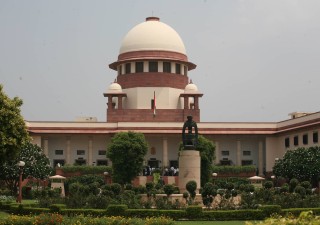Battle between Indian copyright societies sparks question: How many copyright societies does a country need?
31 July 2022

Phonographic Performance Limited India (PPL) works as a collective management organization for sound recordings in India. It controls and manages the public performance and radio broadcasting rights of more than 350 record labels, including the big players like Saregama, Universal Music, Sony Music, etc. There are many regional labels, too, that PPL represents. It is quite an old organization (it was founded in 1940) and has been operating for more than half a century now.
PPL was registered under the Indian Copyright Act, 1957 as a copyright society; however, a decade ago, an amendment to the act in 2012 made it mandatory for the copyright societies to reregister themselves with the government within one year. Pursuant to this amendment, PPL filed an application seeking its reregistration, but before the government could consider it or pass an order, PPL chose to withdraw its application, opting to work as an incorporated entity. The government sent a communication to PPL saying that it does not accept its withdrawal of the application since it would be prejudicial to the rights of the copyright owners. No further action was taken on the application thereafter. PPL has been issuing licenses to users under Section 30 basis assignments of IP from its members. Section 30 of the act provides for granting of licences by agents who act on behalf of the copyright holders. PPL, therefore, claims to function as agent of its members and grant licenses in that capacity.
In 2018, PPL filed an application for re-registration once again, but the government rejected it for being a belated claim. PPL filed a writ petition before the High Court of Delhi and prayed for an interim order directing the government not to consider and process any other party’s application for registration as a copyright society for sound recordings. The court did not stay the continuation of the process of registration concerning other applicants; however, it directed the government to consider the possibility that PPL’s application for registration may be revived if it succeeds in the writ and therefore not to “take any inconsistent action”.
Despite this, the government proceeded to register another society named Recorded Music Performance Limited (RMPL) under Section 33(3) of the Copyright Act, 1957. Notably, the proviso to Section 33(3) of the Copyright Act says that “that the Central Government shall not ordinarily register more than one copyright society to do business in respect of the same class of works”; however, there is no express bar on registration of more than one society for the same kind of copyrightable matter. PPL again moved to the High Court in a writ against the grant of registration to RMPL.
The High Court of Delhi, vide its judgment dated March 9, 2022, allowed both the petitions. The order granting registration of RMPL was set aside. The government was directed to re-consider PPL’s application for reregistration on merits, as being filed in time. The reasoning that the court furnished for this is that PPL’s application was rejected without going into the merits and providing PPL an opportunity to be heard. The court further mentioned that RMPL’s application was accepted by the government “in a hurry”, ignoring the order of the High Court. Below are the relevant operative paragraphs of the judgement:
“The respondent No.1, while granting the registration to the RMPL/ respondent No.2, had completely ignored the order passed by this Court in WP No. 21/2021, wherein this Court while granting the ad-interim stay to the petitioner, clarified the respondent No. 1/ Government would have to keep in mind that in case the petitioner succeeded in the present Writ Petition, its 2013 re-registration application would stand revived, and directed the respondent No.1 to not take any steps inconsistent with the said position during the pendency of the writ petition.”
“If the respondent No.2/ RMPL registration is not set-aside, the same would irreversibly prejudice the petitioner's chances for registration as a copyright society, unless the Government consider giving registration to two societies though, per Rule 49 of the Copyright Rules, the registration of another copyright society for the same class of works is an express ground for rejection of a subsequent application.”
In an appeal filed before the division bench of the High Court against the aforesaid order, the court passed an order on April 11, 2022, and as a pro tem measure, granted a stay on the judgment of the Single Judge to the extent it bars RMPL from functioning as a Copyright Society. The court also directed the government to consider the application of PPL during the pendency of the appeal. It was observed by the court that “it is the government which sent a communication to PPL that its application for withdrawal had not been accepted, and therefore, was still being considered. Therefore, in sum, our sense is that government has contributed to the muddle which has got both the parties into fray.”
While it remains to be seen as to how this dispute will unfold, in light of all this, if we deliberate on the question as to whether multiple societies should be allowed and registered, and, if yes, for what reasons; we would see quite a few advantages and drawbacks worth consideration. Firstly, allowing plurality of copyright societies adds to the burden of the users of copyright subject matter. One society for one type of works is a convenient option as users have a single access point to seek licenses. The concept of multiple societies, on the other hand, makes the user conduct research as to which copyright society controls a particular work, and then seek multiple licenses from different societies if it wishes to use and/or publish broad content and repertoire. This raises the transaction cost and adds to compliance burden. Imagine the time that the restaurant owners who play music in their premises will need to invest before seeking licenses. These bottlenecks and complexities motivate users to skip licenses and add to the menace of piracy.
Competition is considered as the primary benefit that plurality of copyright societies may offer. Proponents of plurality believe that multiple copyright societies would create competitive environment in the content licensing and put a check on the abusive behaviour of big players in the market. Indeed, this is a helpful antitrust solution; however, when the government fixes the royalty rates, or, provides for price ceiling and floor price; a regime of single window licensing also works well. In fact, direct regulation on pricing this way or by other means works as a better solution, rather than doing away with statutory monopoly of societies. Notably, the natural monopolies are anyway bound to exist even if there is no statutory monopoly. Bigger societies with major labels as their members would have more content to license, more users and lesser transaction cost. As per the principle of economies of scale, when the number of works are higher, administrative cost per work tends to decrease. This way, such societies would grow bigger with time and the smaller ones are likely to die as they would find it difficult to keep their costs in control and compete with bigger ones in order to survive.
It may be more fruitful if the focus is shifted from registering multiple societies to working towards boosting their efficiency, transparency, and democratic functioning. A copyright society should have even participation from authors as well as labels. If regulated well in terms of composition, pricing and royalty sharing processes, one single copyright society may prove to be enough in producing the desired results. In general, the question of plurality of societies should be deliberated upon more. The law in other countries can be looked into for the purpose of guiding vision. Also, the word “ordinarily” in Section 33 creates unnecessary confusion around the legislative intent. Hence, it would be worthwhile to first make it clear through a statutory amendment as to whether more than one society can be registered or not, and if yes, in what circumstances. If, for instance, one society has been operating for long, and the other one which is relatively inexperienced and new applies for registration, can it be registered? If yes, what factors should be considered and what criteria / threshold should it meet to qualify for registration must be clarified by way of suitable amendments to the governing statute and the accompany rules?









